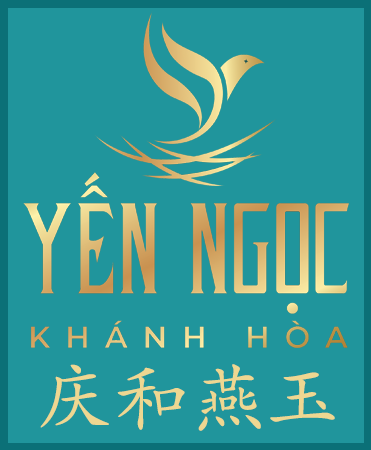BÀI VIẾT
The Vibrant Landscape of Student Communities
In today’s interconnected world, student neighborhoods play a pivotal duty in shaping scholastic and personal experiences.

These communities are not just collections of people but are dynamic ecosystems that promote development, finding out, and partnership amongst pupils. They vary extensively in kind and feature, from campus-based teams to international online discussion forums, each offering unique possibilities for engagement and advancement.
Whether you are stepping onto a college campus for the very first time or engaging in digital knowing atmospheres, understanding the framework and advantages of pupil areas can greatly boost your educational journey. This post looks into the essence of student communities, exploring how they operate, the benefits they provide, and the ways in which they can be leveraged for individual and academic success.
Comprehending Student Communities
Trainee neighborhoods are foundational to the scholastic experience, working as both social and academic support group. At their core, these communities are groups developed normally by pupils that share common rate of interests, goals, or fields. They can be casual, such as study hall, or formal, like pupil unions and academic support clubs.
These communities are characterized by a shared identification and the collective search of understanding, abilities, and experiences. They serve as platforms for students to link, work together, and contribute to each various other’s development, extending past scholastic borders to influence individual advancement and community engagement.

In essence, pupil communities are microcosms of bigger societal frameworks, where leadership skills are honed, ideas are traded, and lifelong friendships are developed. The interactions within these communities show a diverse mix of cultural, intellectual, and social dynamics.
- Networking Opportunities: Trainee areas supply a network of peers and coaches that can use support and support.
- Ability Advancement: Taking part in area activities aids pupils establish important abilities such as communication, management, and teamwork.
- Resource Access: These areas often offer access to scholastic sources, including study products and experienced guidance.
- Social Interaction: They supply a system for social interaction, alleviating the transition right into brand-new scholastic settings and aiding to fight seclusion.
Via these different features, student areas end up being indispensable to the holistic development of pupils, laying a structure for future expert and individual success.
The Benefits of Taking Part In Pupil Communities
The advantages of participating in pupil communities are multifaceted, influencing both academic and personal spheres.

On a scholastic level, these areas motivate joint discovering, enabling trainees to gain from diverse point of views and proficiency. Sharing knowledge and resources within a neighborhood can result in more reliable discovering end results and improved scholastic efficiency.
Furthermore, student areas use a system for individual development and self-discovery. By involving with peers from various histories and techniques, students get a wider worldview, enhancing their social capability and empathy. This direct exposure to varied perspectives is vital in developing critical reasoning and analytic abilities.
In addition, active engagement in community tasks can enhance trainees’ confidence and self-esteem. Taking on leadership functions or joining discussions and occasions promotes a feeling of achievement and belonging, which is critical for total well-being and inspiration.
Sorts Of Trainee Neighborhoods
Student communities come in numerous forms, each dealing with various interests and objectives. These can be generally categorized into scholastic, social, recreational, and professional communities, to name a few. Each kind gives one-of-a-kind platforms and chances for pupil engagement.
- Academic Communities: These are normally focused around details fields or scholastic passions. Examples include study hall, honors cultures, and department clubs.
- Cultural Neighborhoods: These groups concentrate on promoting cultural recognition and diversity, often arranging occasions and activities to commemorate numerous practices.
- Recreational Areas: These consist of sporting activities teams, leisure clubs, and hobby-based groups that supply a break from academic roughness and advertise physical and mental health.
- Professional Communities: These are focused on job development, providing networking possibilities, workshops, and mentorship programs to prepare trainees for the expert world.
By determining and engaging with the right communities, pupils can customize their university experiences to line up with their interests and career desires, leading the way for a satisfying academic trip.
Developing a Flourishing Pupil Area
Developing and keeping a flourishing student area requires effort and partnership from both pupils and educational institutions. It begins with cultivating an inclusive atmosphere where all trainees feel welcomed and valued regardless of their backgrounds.
Organizations can support this by supplying resources and centers that encourage interaction and involvement. This consists of developing physical spaces like trainee unions and online systems that assist in interaction and partnership. In addition, organizing events, workshops, and workshops can additionally boost involvement, providing pupils with opportunities to connect and learn from each various other.
Management and Trainee Involvement
Effective leadership is vital in nurturing a successful trainee community. Management functions within these neighborhoods supply pupils an opportunity to develop and demonstrate their business and social skills. Trainees who think these roles add considerably to setting the tone and direction of their areas, affecting their peers favorably.
Motivating management and active engagement among students not only strengthens the neighborhood but also empowers individuals, preparing them for future challenges. By fostering a culture of cooperation and support, trainee communities can flourish, leaving a long lasting influence on their members and the academic atmosphere all at once.
